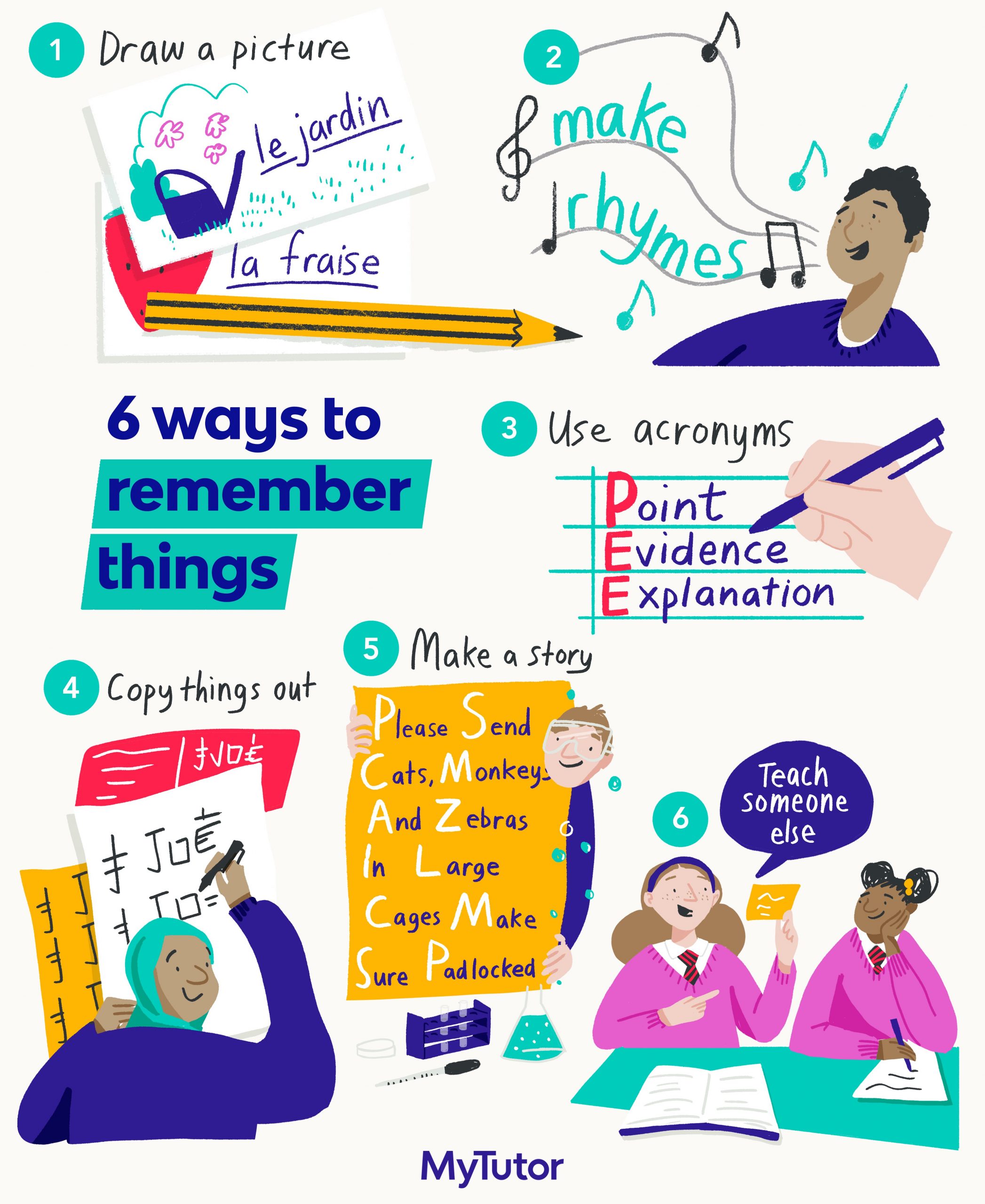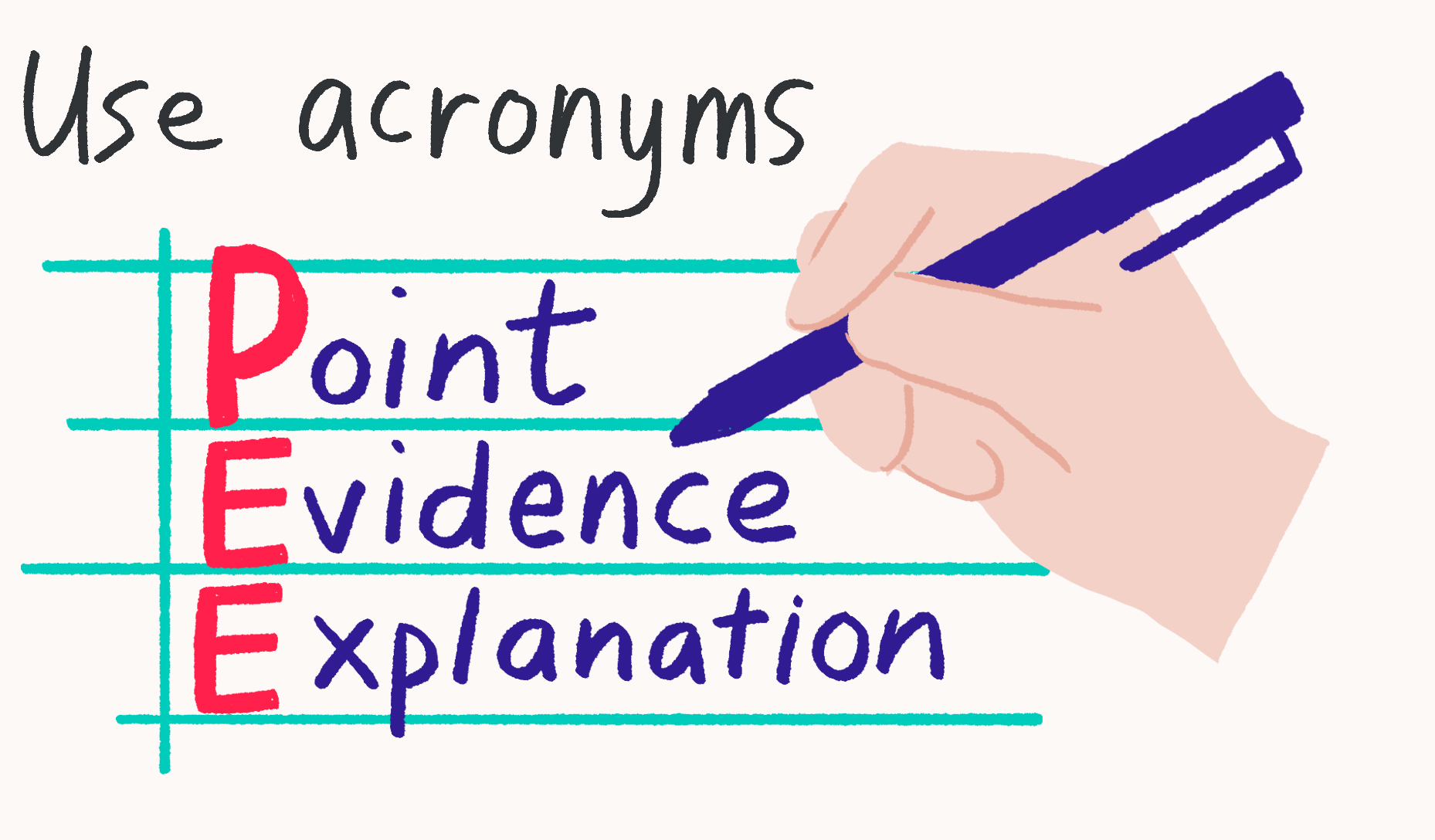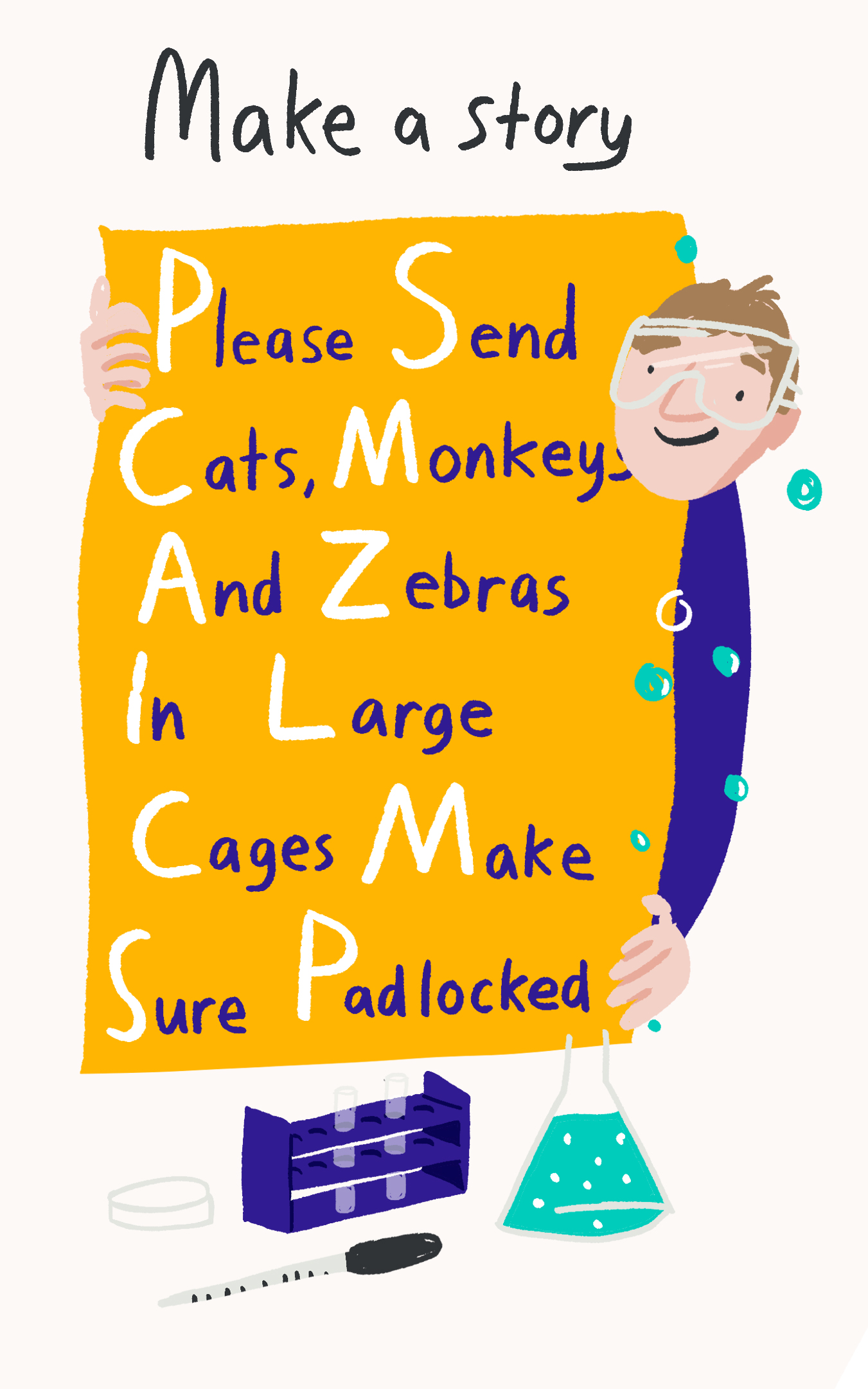

In every school subject, remembering information is pretty central. Of course, you need to understand things first (thank you, teachers!), but getting knowledge to stick in your brain is up to you. Some research says that if you don’t revisit a new piece of information within 24 hours after you first hear it, you’ll forget it. In any case, whether it’s learning a language, absorbing a new set of Maths formulas or memorising historical dates so you can understand how one set of events led to another, knowing how you can get information to make itself at home in your head is a key to academic success. And not getting locked out of the house! (keys, wallet, phone, mask…)
The thing is, everyone’s brains work a little differently. Our uniqueness is what makes us special, and it’s important to understand how our own brains work so we can adapt our learning to fit it. With that in mind, we’ve put together 6 key ways to remember things. You might find one technique that you’ll use for everything, or you’ll likely find a couple that will work best for different subjects.
1. Draw a picture


If you tend to remember how things look, or think of yourself as a visual learner, making little diagrams to illustrate any piece of info you want to memorise can be really effective. This could mean making visual flashcards to remember foreign words, or adding pictures next to term definitions in Biology to help you remember scientific processes.
2. Make rhymes


If you’re always remembering song lyrics but find revision a slog, try inventing rhymes to sum up concepts in different subjects. This is also known as mnemonics (fancy word alert!). For example, “Columbus sailed the ocean blue in fourteen hundred and ninety two” helps you memorise the year Christopher Columbus set off on his voyage that got him to America. You get the idea!
3. Use acronyms


Acronyms are another great way to memorise tricky concepts that could otherwise go in one ear and out the other. You’ve probably heard of PEE (not that pee – keep it clean!), which is a handy acronym used in English essay writing. To write a paragraph you start with the Point you’re making, then Evidence that point (normally with a quotation), and then Explain what you mean.
4. Copy things out


AKA rote learning! This is one of the oldest ways for students to remember things, and it might make you think of a Victorian schoolhouse (copy out the Bible 3 times before bed!). But the truth is, repetitive as it may be (which is kind of the point) this is often one of the most effective ways to get big sets of new information to stick. It’s the most common method used for learning Chinese characters (Chinese toddlers and UK university students alike), and it’s generally the best way to learn quotations for English too. It is better suited to verbal learners though, so if it really doesn’t work for you then fear not, you’ve still got options.
5. Make a story


Inventing a story to sum up a series of facts or a complicated spelling is another type of mnemonic (ok, last mention of that word, we promise!). If you’re trying to remember lines of the periodic table, for example, pulling it all together with a story narrative gives you a structure where you can place triggers to remember each chemical group. An example to help you remember the reactivity of metals is “Please Send Cats, Monkeys and Zebras in Large Cages, Make Sure Padlocked” – this sounds a bit mad but it stands for Potassium, Sodium, Calcium, Magnesium, Aluminum, Zinc, Iron, Lead, Copper, Mercury, Silver and Platinum – see how the story makes it more digestible?
6. Teach someone else


One of the best ways to remember things is by explaining it to someone else. Whether you’re a really social person or more introverted, finding a classmate or family member to “teach” can be a a great way to learn and revise. If you’re learning at home at the moment, a nice way to fend off isolation and boost your learning at the same time (the dream!) is by having a study session on video chat with a friend. You can take turns to explain concepts, topics and facts to one another, and try testing each other too. You could also see how your Mum, Dad or sibling enjoys one of your subjects by giving them a presentation on what you’ve been learning recently.
If you’d like to find out more about learning styles and how to adjust your home studies to fit you, have a read of our previous blog, about the 7 types of learner.



